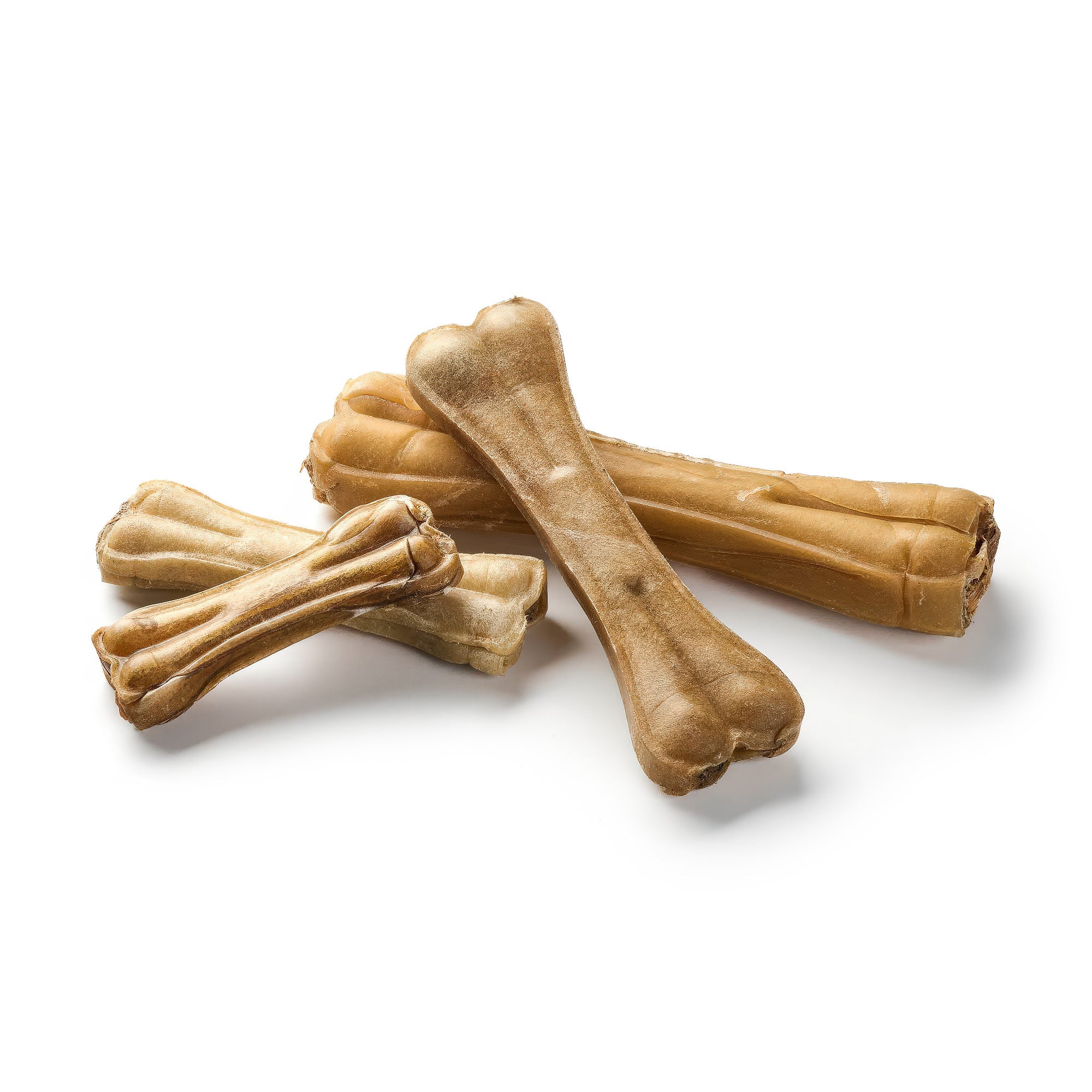
Robot dogs for children – a real alternative?
Share
Every day, new artificial intelligences are developed and released that are intended to enrich our lives in many ways. One of the most fascinating developments in this field is the creation of robot dogs. These mechanical companions, which once only existed in science fiction films, have now found their way into many households. With their blinking eyes and wagging tails, they simulate the behavior of real dogs and promise to be a loyal friend.
Content: Robot dogs for children - A real alternative
- Technological advances and development
- Advantages and disadvantages of robot dogs
- Ethical and social implications
- Comparison: Robot dogs vs. real dogs for children
- Ecological footprint comparison
- Future prospects and developments
- Conclusion
The idea that a robot dog could take on the role of a living pet arouses both excitement and skepticism. For children in particular, these high-tech marvels offer an interesting combination of toy and pet. They don't require walking in the rain, regular visits to the vet, and don't leave hair on the sofa. But despite the obvious advantages, the question remains whether these technological marvels can really meet the emotional and social needs that a real dog offers. As robot dogs prowl the living room and respond to voice commands, they raise fundamental questions: Can they replace the deep bond and multiple benefits of a living animal? We have our doubts!
Enjoy moments together with our delicious dog chews!
Technological advances and development
The development of toy robot dogs has made remarkable progress in recent years. Originally designed as simple mechanical toys that could only respond to a few commands, they are now able to perform a range of tasks and be more interactive.
Modern robot dogs for home use now offer features such as responding to voice commands and the ability to react to touch or detect obstacles. Many of these toys are equipped with a variety of sensors that allow them to orient themselves in and respond to their environment. For example, they can listen to different tones of voice or recognize and carry out certain, pre-programmed commands.
While the highly advanced robot dogs developed by companies such as Boston Dynamics for industrial and military use are impressive examples of technological possibilities, the toy robot dogs are designed to enrich everyday life and make it fun. These are much less complex and aim to be interactive companions that can serve as an introduction to the world of technology and responsibility, especially for children between the ages of 2 and 6.
Make your dog happy with our delicious snacks!
Advantages and disadvantages of robot dogs
Robot dogs offer a number of benefits that make them an attractive option for families with children. They are low-maintenance and cost-effective, as they do not require regular care such as feeding, walking or vet visits. This can save costs and time in the long run and is particularly useful for busy families. In addition, robot dogs do not cause allergies or transmit diseases, making them safe for children with allergies. Additionally, as they do not produce animal waste and do not require animal products, they are a clean and low-maintenance alternative.Robot dogs don't leave paw prints on the floor, hair on the sofa, or unpleasant smells in the house. They are particularly attractive for families who value a clean and hygienic environment. Robot dogs also don't need daily walks and can easily be left alone for long periods of time without having to worry about them getting lonely or bored. In the worst case scenario, the battery will run out. Despite their advantages, robot dogs also have some disadvantages and limitations, especially when it comes to using them as companions for children. One of the biggest limitations is the lack of emotional connection and interaction that real dogs provide. Robot dogs cannot even begin to replicate the deep emotional connections that develop between children and real dogs. Their functions and adaptability are extremely limited despite technological advances. However, robot dogs are significantly cheaper than real dogs, both in terms of purchase and maintenance. They do not require food, veterinary care or special care, but only occasional electricity to charge the battery. Advantages:
- Easy to care for and cost-effective: No need for feeding, walking or vet visits
- No allergies or diseases: Safe for children with allergies and no disease transmission
- Clean: No animal waste or animal products required
Disadvantages:
- Lack of emotional attachment: Robot dogs cannot establish deep emotional connections
- Limited functions: Despite progress, robot dogs are limited in their capabilities
Ethical and social implications
Although robot dogs are an innovative technology, it is unlikely that they will be able to completely replace real dogs any time soon. Real dogs offer a type of emotional connection and live interaction that robot dogs cannot replicate with current technology. Therefore, robot dogs may become a complement to, rather than a replacement for, live pets, especially in households that cannot or do not want to keep a real dog for various reasons.
In contrast, Boston Dynamics' development of Spot, a robot dog, shows how specialized robot dogs are already being used in areas such as industry and rescue operations. Spot can open doors independently, push open automatically closing doors, and even read analog meters. These skills make it a valuable tool for specific tasks where conventional four-legged friends are not involved. Spot illustrates how robot dogs can complement or even surpass real dogs in certain functions, but without the emotional component that real pets offer.
Comparison: Robot dogs vs. real dogs for children
The distinction between robot dogs and real dogs is obvious and hardly needs much explanation. Real dogs offer an emotional depth and opportunity for social interaction that robot dogs simply cannot. Real dogs can show genuine affection, feel empathy, and provide a variety of therapeutic benefits that come from interacting with a living being.
Robot dogs are and will always be mechanical devices. They can be programmed to perform certain tasks or respond to certain stimuli, but they are not capable of feeling or returning love or affection. They can be useful in certain situations, such as in households where allergies make keeping real animals impossible or where young children need to be introduced to the idea of a pet through play. Nevertheless, they are at best a supplement and not a replacement for the living, breathing, emotional presence of a real dog.
In this sense, the attempt to replace real dogs with robots is not only technically but also emotionally very limited.
Ecological footprint comparison
The comparison between the ecological footprint of robot dogs and real dogs is actually a bit strange. But while we're at it:
- Manufacturing and disposal of robot dogs: Robot dogs are made of metals, plastics and electronics, all of which undergo environmentally intensive production processes. Material extraction and manufacturing can consume significant amounts of energy and generate environmentally harmful waste. After their useful life has expired, these devices must be properly recycled to avoid environmental damage caused by electronic waste.
- Resource consumption of real dogs: Real dogs need food, care and medical treatment throughout their lives. The production of dog food, especially that with a high meat content, can use a lot of water and agricultural resources. Products for dog care and medicines can also contain chemicals that are harmful to the environment. Sustainable dog ownership is therefore not necessarily easy, even with real four-legged friends.
Future prospects and developments
Despite all the technological advances, the prospect of robot dogs ever replacing our beloved real dogs remains highly unrealistic. While the technology behind robot dogs is certainly advancing and they can offer increasingly realistic features, they lack the fundamental ability to form a genuine emotional connection that dogs share with their owners.
The idea that technological innovations can replicate the warm presence and authentic affection of a living dog is far-fetched. While the market for robot dogs may grow and they may be useful in certain practical applications, they will always be inadequate as replacements for real dogs.
Any assumption that technological and cost improvements can close this fundamental gap fails to recognize what pets really mean in our lives, something we certainly hope we will never have to experience.
Conclusion
Robot dogs may at first glance offer some practical advantages, such as easy care and the absence of allergy triggers, not to mention the convenience of not having to pick up dog poop . But they also have their limitations. They don't jump for joy when given a tasty snack or healthy chew , nor can they really cuddle or radiate real emotional warmth.
Their reactions are pre-programmed and do not offer the spontaneity and authenticity that real dogs show in such moments. Interactions with a robot dog remain artificial and superficial, and they cannot come close to covering the real social and emotional needs that a living dog fulfills. We are not fans of robot dogs - and probably never will be. Even though they may seem useful in certain situations, we believe the disadvantages outweigh the advantages. Their limited capabilities and the complete lack of real bonding make them an inadequate alternative. We firmly believe that the bond between humans and animals is created through real interactions and care - something that a robot can never provide.
First-class dog chews for happy sniffing noses available here!















